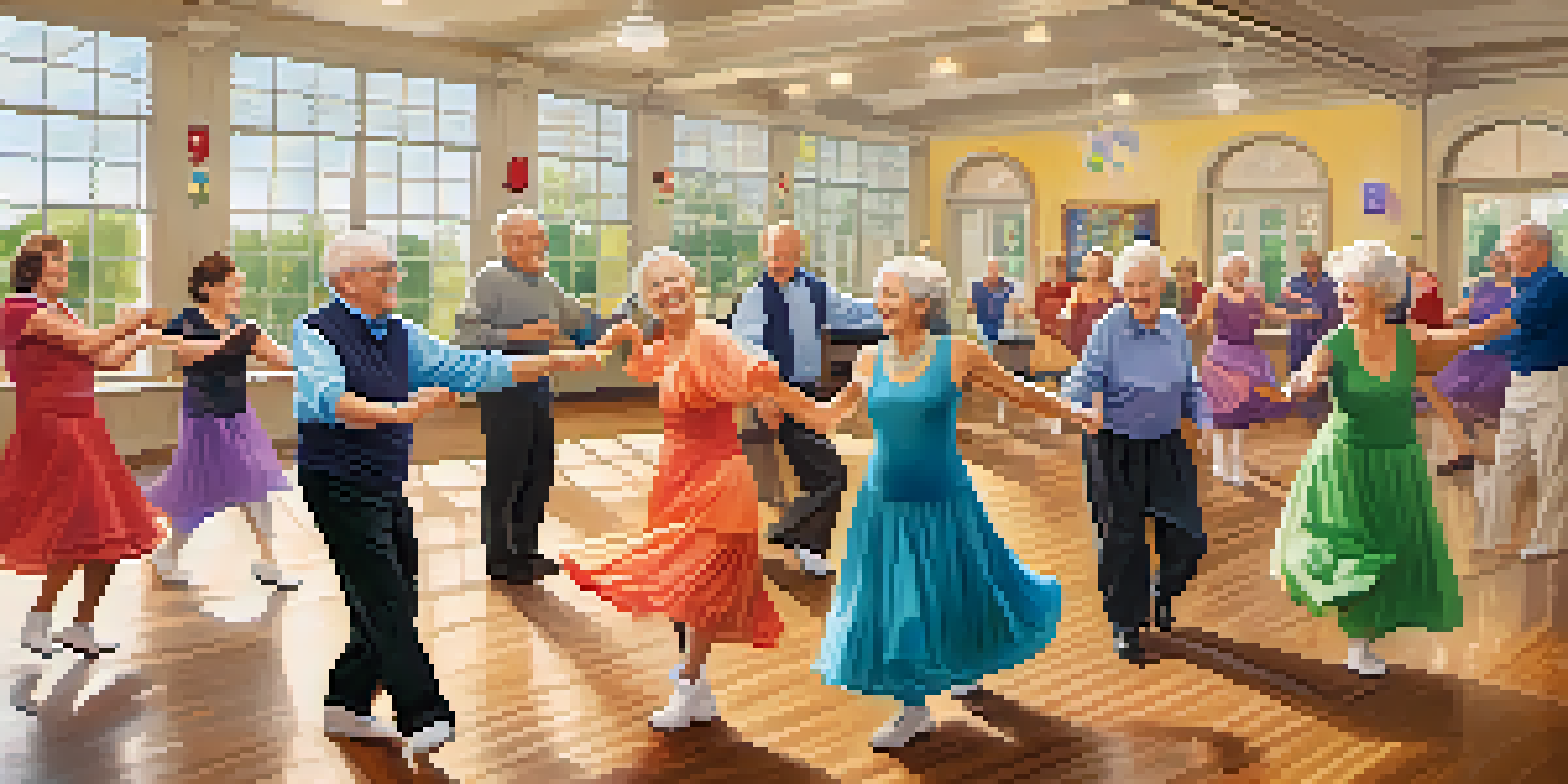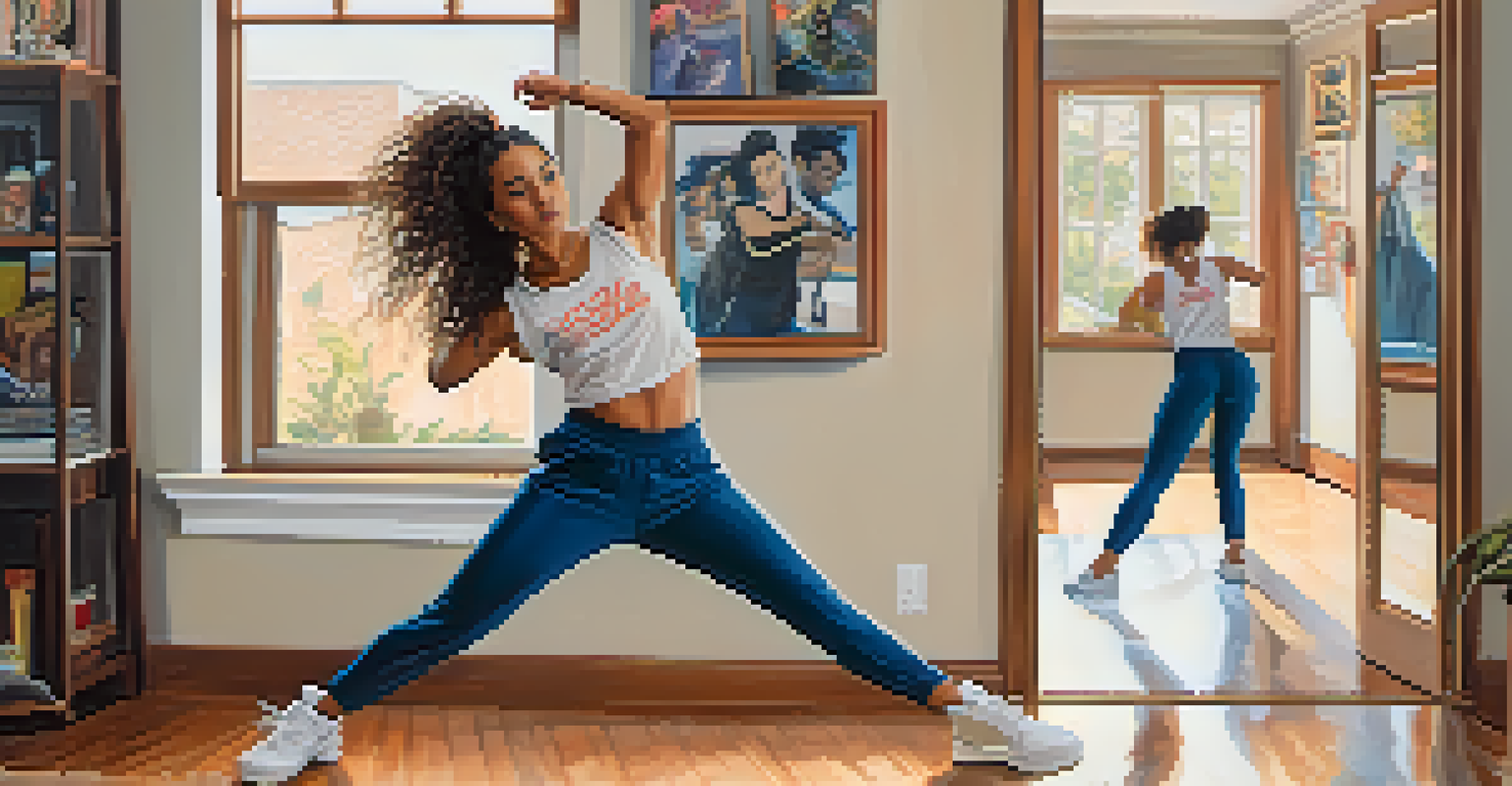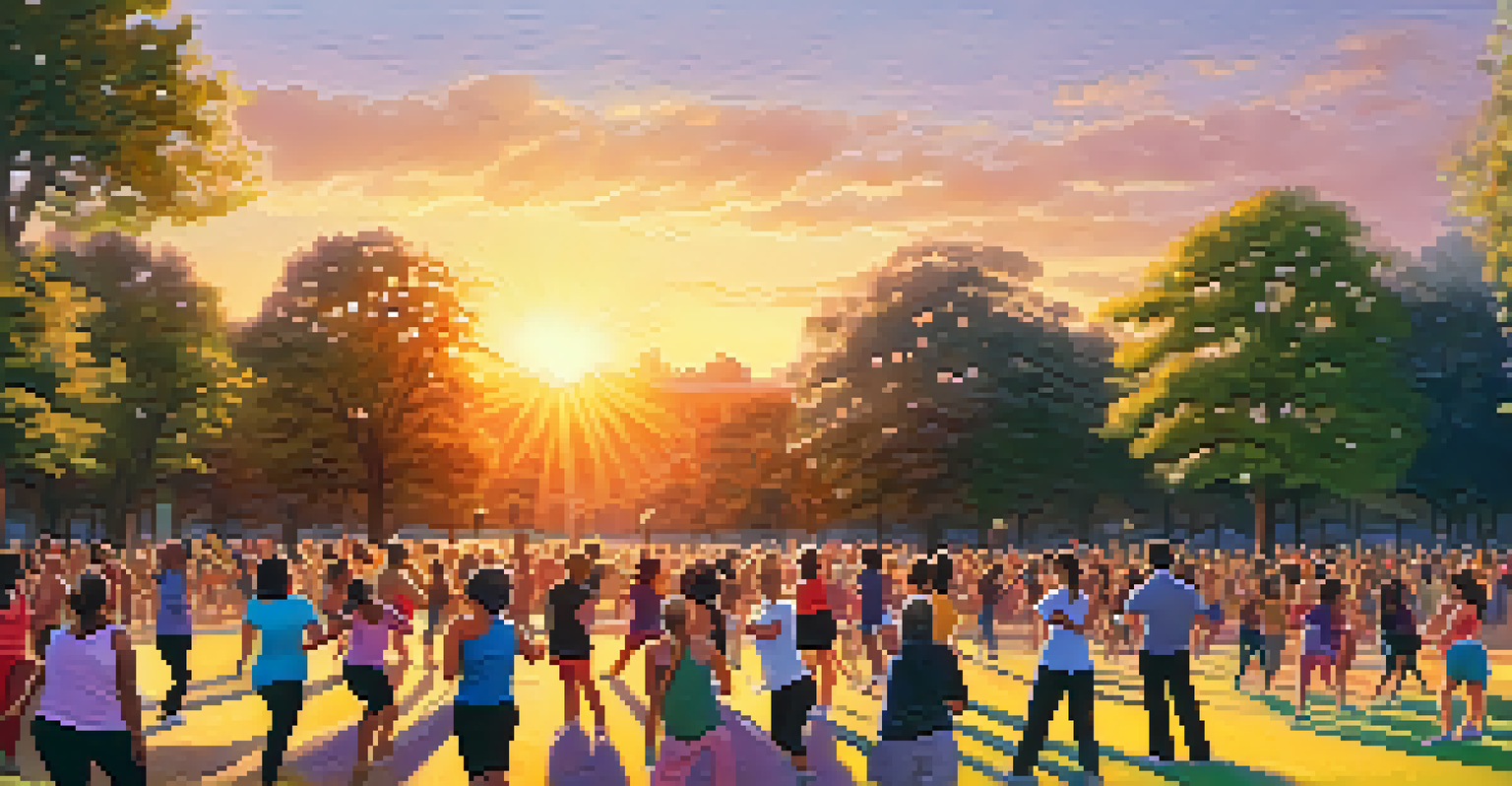Using Dance to Enhance Memory: A Comprehensive Study

The Connection Between Dance and Memory Enhancement
Dance is more than just a physical activity; it's a powerful tool for enhancing memory. Studies show that engaging in dance can stimulate areas of the brain responsible for memory retention. This connection arises because dance involves both cognitive and physical elements, making it a unique form of exercise.
Dance is the hidden language of the soul.
When you dance, you're not only remembering steps but also coordinating movements, which requires mental focus. This dual engagement can strengthen neural pathways, improving overall cognitive function. Just think of how dancers memorize complex routines, which showcases the brain's remarkable adaptability.
By incorporating rhythm and movement, dance creates a memorable experience, making information easier to recall. This can be particularly beneficial for those looking to improve their memory skills, whether through structured classes or casual dancing at home.
The Science Behind Dance and Cognitive Function
Research has shown that dance can have significant cognitive benefits, particularly in older adults. A study from the New England Journal of Medicine found that dancing regularly can reduce the risk of dementia by up to 76%. This statistic highlights how physical activity, especially dance, can be a fun and effective way to keep the mind sharp.

The act of learning dance routines involves memorization and recall, which exercises the brain. Moreover, the social aspect of dancing can further enhance cognitive function by encouraging interaction and communication with others. This combination of physical, mental, and social engagement creates a holistic approach to memory enhancement.
Dance Boosts Memory Retention
Engaging in dance stimulates brain areas related to memory, enhancing cognitive function through physical and mental coordination.
Incorporating dance into one's routine can be particularly effective for those who enjoy movement but may not find traditional memory exercises engaging. It transforms memory work into a lively experience, making it easier to retain information.
Types of Dance Beneficial for Memory Improvement
Various dance styles can contribute to memory enhancement, each offering unique benefits. For instance, ballroom dancing involves partner work and complex patterns that require focus and coordination. This not only aids in memory but also builds social connections, enriching the experience.
To watch us dance is to hear our hearts speak.
Similarly, styles such as salsa or hip-hop encourage improvisation and creativity, allowing dancers to engage their brains in different ways. The dynamic nature of these dances means that participants must adapt and remember new moves frequently, further strengthening their recall abilities.
Even simple forms of dance, like Zumba or line dancing, can provide cognitive benefits. The repetition of steps and rhythms helps solidify memory retention, making it an accessible option for people of all ages.
Real-Life Examples of Dance and Memory Enhancement
There are many inspiring stories of individuals who have used dance to improve their memory. For example, a group of seniors at a community center began a weekly dance class and reported not only improved physical health but also sharper memories. They found that learning new routines helped them remember names and faces more easily.
Another example is a young woman who struggled with remembering her studies. After joining a dance club, she noticed that the rhythm and movement helped her recall information better while studying. This illustrates how integrating dance into daily life can lead to unexpected cognitive benefits.
Social Dancing Enhances Cognition
The social aspects of dance promote interaction and communication, providing a holistic approach to memory enhancement.
These anecdotes underline the practical applications of dance as a memory aid, showing that anyone, regardless of age or ability, can harness the power of movement to enhance their cognitive skills.
How to Get Started with Dance for Memory Enhancement
Starting a dance practice for memory enhancement doesn't require extensive experience or training. Many local community centers offer beginner classes in various dance styles, making it easy to find a suitable option. Alternatively, online platforms provide a plethora of dance tutorials that cater to all skill levels.
Incorporating dance into your routine can be as simple as putting on your favorite music and moving freely. This informal approach encourages self-expression and creativity, which can further boost cognitive function. Even a short daily dance session can yield significant benefits.
Remember, the key is consistency. Just like any other exercise, making dance a regular part of your life will maximize its memory-enhancing effects. So, lace up your dancing shoes and let the rhythm guide you!
The Role of Music in Enhancing Memory Through Dance
Music plays a crucial role in the relationship between dance and memory enhancement. It not only sets the mood but also serves as a mnemonic device, helping to anchor memories. The rhythm and melody can trigger recall, making it easier to remember associated movements or information.
When we combine music with dance, we engage multiple areas of the brain, enhancing memory retention. For example, learning a dance to a specific song can help solidify both the movement and the lyrics in our minds. This multisensory approach is particularly effective for memory improvement.
Music Amplifies Dance's Effects
Combining dance with music engages multiple brain areas, making it easier to recall associated movements and information.
Additionally, certain genres of music can evoke emotions that further enhance memory. When we connect feelings to a dance routine, we're more likely to remember it, making music an integral component of the memory-building process.
Future Directions in Dance and Memory Research
As we continue to explore the connection between dance and memory, future research will likely delve deeper into specific dance styles and their unique cognitive benefits. Understanding how different movements and rhythms affect various populations can lead to tailored dance programs for memory enhancement.
Moreover, studies may focus on the long-term effects of dance on memory retention, particularly in aging populations. By examining how dance can serve as a preventive measure against cognitive decline, researchers can provide valuable insights into healthy aging.

Ultimately, the ongoing exploration of dance as a tool for memory enhancement promises to open new doors for cognitive health, blending artistry with science in exciting ways.